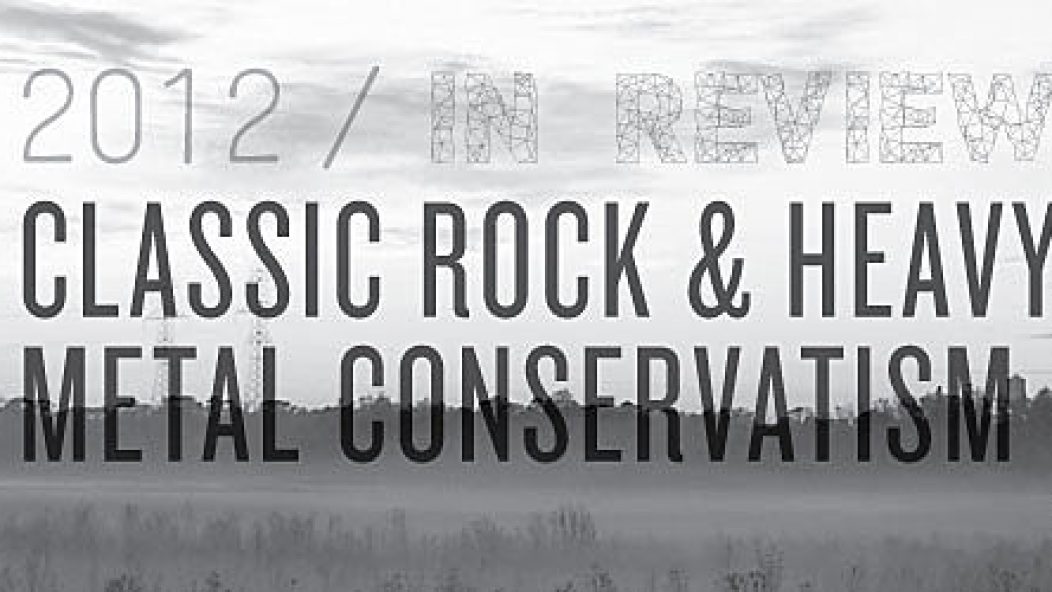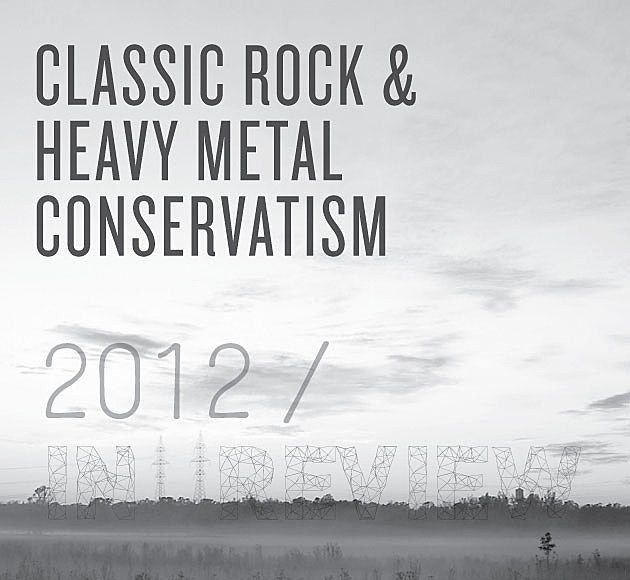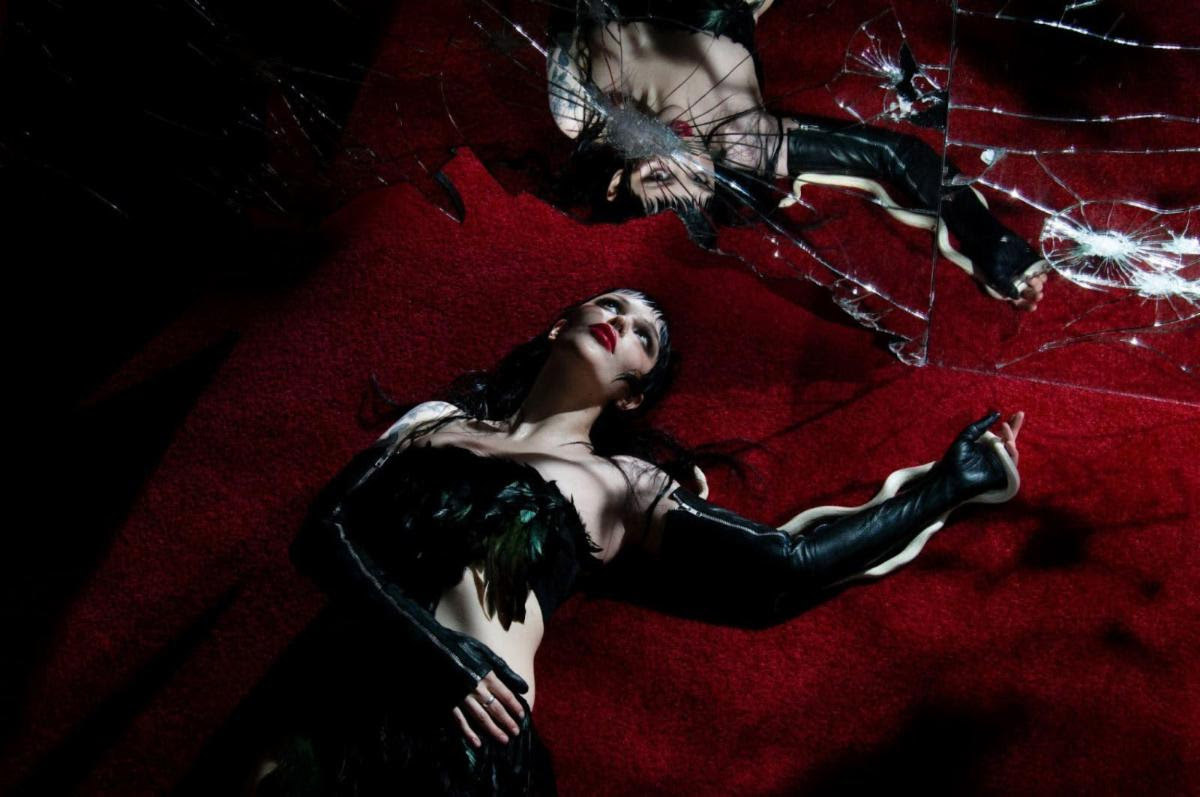
2012 in Review: Classic Rock and Heavy Metal Conservatism
The most significant change in my music listening in 2012 had nothing to do with labels, festivals, or bands themselves. I had a major shift in my work situation this year. Early on, my workstation was moved from a closed room to an open workspace, which I share with coworkers. Consequently, though I’m allowed—even encouraged—to listen to music while at work, my listening habits needed to change. Blastbeats and vocal fry do not a peaceful workplace make. In what amounts to happy coincidence, metal labels in 2012 accommodated my need as it arose. By now, most if not all of 2012’s best-of lists are public knowledge, and the vast majority of those I’ve seen (Stereogum, Decibel, the Metalsucks staff lists) sport tons of great clean singing releases.
One of my coworkers—an intelligent, older gentleman in partial retirement—sat at the desk next to mine one day in September and asked me “What song is this?”
“It’s called “An Alternative to Freedom””.
“I didn’t know The Doors wrote a song called that.”
“They didn’t.”
. . .
Witchcraft – “An Alternative To Freedom”
. . .
The Doors are not the first band Witchcraft reminds me of (Ghost, on the other hand . . . ), but the fact a stranger can mistake them at a glance for classic rock is telling. The phenomenon isn’t unique to that band either. I’m confident that I could play Witch Mountain for strangers, say in a mall kiosk, and tell them that the music was a long-lost recording of Black Sabbath playing with Nancy Wilson of Heart, and people would believe me.
Spin magazine, of all places, ran an editorial about this trend, but I found their scope a bit restrictive. That article fixates on the talented women fronting these bands, and the supposed occult content of their music—that approach completely ignores Ghost, Witchcraft and its sibling acts, Troubled Horse and Graveyard. Focusing on the sex of these singers also feels vaguely sexist in its own way: relating them by chromosome carries the subtext that they sing remarkably well as women, not as singers in general. Prsnz and Plotkin hold up well not just next to Doro and Turnenin, but to Halford and Dickinson as well.
The most satanic and occult lyrics in this group come from Ghost—whose theatricality renders them unbelievable—and The Devil’s Blood—who are very serious. Those two bands excepted, I’m hesitant to label these groups “witchy” the way Spin did, for fear of a second Witch-house flash-in-the-pan. After all, these groups are reviving the blues scale in heavy music (even though the blues never quite abandoned doom metal, it’s been pretty absent from most ‘extreme’ genres since roughly Kill Em All, with some notable exceptions). And in a blues-related context, satanic imagery is nothing unique; the devil has haunted the blues since Robert Johnson went down to the crossroads.
. . .
Robert Johnson – “Crossroad Blues”
. . .
The metal media’s coverage of this phenomenon hasn’t examined it further. Rather, we’ve got a silly forced genre tag and a backlash against it. As for “vest metal”, the only purpose behind a genre tag is to conveniently describe the music it relates to, and “vest metal” utterly fails in that regard.
Rather, let’s call a spade a spade: heavy metal is hosting a classic rock revival.
. . .
Gypsyhawk cover Johnny Winter while wearing vests
. . .
Classic rock revives itself regularly in different corners of the music industry about once a decade, usually to great fanfare. Ten years ago garage rock cast a large financial shadow: The Hives, The Strokes, and The White Stripes sold large amounts of records and grew into stadium draws. Ten years before that, grunge produced not only multiplatinum records, but some of the most critically acclaimed music there is. The same phenomenon repeating itself in and among metal labels would be the biggest economic shot in the arm the genre’s experienced since nu metal.
If another classic rock revival was inevitable, as I believe it was, the question remains: why in the world of metal music, where the most popular trajectories have been away from the classic rock template?
I can imagine a handful of reasons. Most obviously, the classic rock revival in metal coincides with a wider interest in music from the late ’60s and early ’70s. Contemporary folk groups like Fleet Foxes and Mumford and Sons take their four-part vocal harmonies form The Beatles and The Beach boys almost wholesale, for example. (I suppose that means The Tallest Man on Earth and Wovenhand are wrestling for Bob Dylan’s crown?) the existence of those bands fails to completely explain the phenomenon crossing over to, for example, Relapse records’ roster. Why should Royal Thunder share a home with what was once a prime label for grindcore?
. . .
Ghost – “Secular Haze”
. . .
I think the existence of grindcore and similarly extreme genres primed the engine for classic metal. When the White Stripes were first making waves on MTV, metal at its cutting edge took extreme liberties with the most basic templates of the genre: grind and prog sludge warped acceptable song lengths, progressive bands like Between the Buried and Me spliced in bits of so many other genres that the metallic elements themselves felt incidental, melodic metalcore bands polished popular records to a near-electronica sheen in the studios. And a cursory browsing of this site’s editorial history—or any reputable metal blog’s editorial history—will show that those trends were not always good things for the genre as a whole.
As the old adage goes, the grass is always greener on the other side, and in this case the other side means “before I was born”. Ghost and The Devil’s blood are the backlash from that wave. The music these bands make looks backward with nostalgia at a time when bands had to record every song live in the studio with minimal cuts, and there was no questioning the usefulness of a great singer in a metal band (as opposed to an—arguably—replaceable vocalist). One could call this trend a kind of heavy metal conservatism, in opposition to twenty years of extreme metal’s liberalities. And it may be high time for a little restraint. After hearing, for example, Agoraphobic Nosebleed, I’m not convinced of how much heavier or faster extreme metal could possibly get.
. . .
Troubled Horse – “One Step Closer to My Grave”
. . .
The classic rock revival bands seem to put a greater emphasis on making the individual songs in their releases both distinct and of high quality, as opposed to just pieces of a larger collection. These records also play with a larger emotional palate than a standard death metal record. Doom is the soul music of the metal world, and these artists succeed or fail largely based on how well their songs strike chords with the listener, rather than just having beastly guitar tones or good mosh sections. The critical reaction to this trend in 2012 was positive across the board to varying degrees. Whether that will translate into the kind of blockbuster sales that previous rock revival enjoyed remains to be seen, but there are some indicators in that direction: Baroness loosely fit into this trend, and Yellow and Green had the highest-grossing opening week of any Relapse release, and Ghost signed a supposedly massive recording contract. Personally, I don’t see any of the aforementioned bands recording a Nevermind or White Blood Cells, but if they do, it will only mean more otherwise disinclined people being exposed to heavy metal culture.
It’s not likely that this trend stands any chance of wiping out extreme metal, either. Death, thrash, and black metal have too much cultural currency now to be replaced as the go-to stereotypes of what metal is, but if 2012 is any indication those stereotypes will increasingly share shelf and hard disk space with clean singing artists in 2013 and beyond. And I’ll have no shortage of heavy music that won’t disturb the office.
For what it’s worth, this is my favorite Royal Thunder track:
. . .
http://www.youtube.com/watch?v=F2zLGuOQlIo
Royal Thunder – “Shake And Shift”
. . .
. . .












